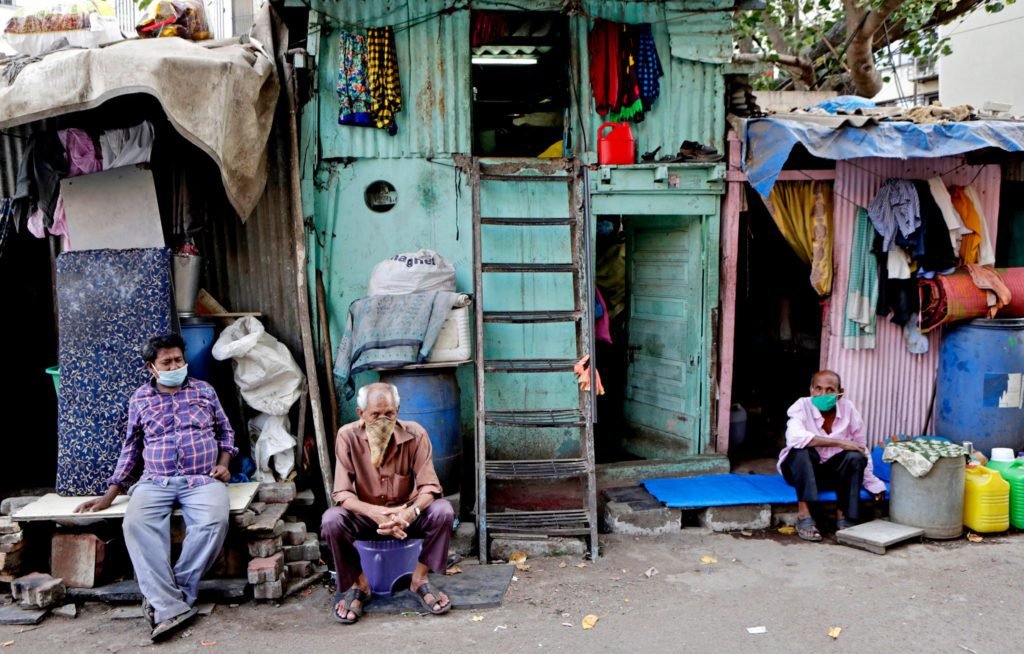By Maxime Le Lijour, Vice-President of IE Global Transformation Club
We will come out of this stronger than before. Most of us have read this sentence somewhere in the past month: in social media posts, in newspapers, on posters attached to the banisters of balconies around the cities we live in. In moments such as this one we need optimism, but as the numbers of Novel Coronavirus cases and deaths keep surging, we are slowly understanding that such motto may be far more fragile than we previously believed. According to John Hopkins University, we have more than 2 million confirmed COVID-19 cases and more than 125,000 deaths – and both numbers are continuing to grow at exponential rates.
Come out of this stronger than before… there might be some truth in that sentence, and yet it’s hard to argue for its complete veracity. Yes, the current pandemic is exposing the weaknesses of our social, political, and economic paradigms – a phenomenon which is serving as a real-life stress test that could redirect our business-as-usual courses of action towards more effective and sustainable paths. We are now realizing that the financial cuts we have been doing to our health sectors in the past years did not take into consideration the possibility of a crisis such as the one in which we are now… we are realizing that eroding the rights of workers as well as the possibilities they have of falling on dignifying, rather than disempowering, safety nets may not motivate their morale… we are realizing that dehumanizing low-skilled jobs and decoupling profits from wages might have alienated people, increasing their mistrust towards the authoritative figures we need to surpass this moment. But those authorities are in part to blame from where we are now… and a fictional stress test could have been a better way to understand we needed to change our system to prepare for what could have come. We continued on that course, and throughout the years some groups have been marginalized so much that the pandemic is hitting them harder than anyone else, and governments are not acting fast enough to protect them from the catastrophe that could be.
Some may think that the COVID-19 is creating unity, almost as the Persian Empire gave rise to the Hellenic alliance in Ancient Greece. The reality is that there is inequality in how people experience the consequences of the virus: medically, economically, socially, and psychologically – and assuming that solidarity has increased everywhere may just be wrong.
Many studies have already shown that mortality rates are higher among poor classes and minorities. After all, being poor is a risk factor for this virus: in the US, only 9.2% of the people in the lower-income quartile can work from home, while the figure surges to 61.5% in the top quartile. In addition, we should not forget the heavy socio-economic consequences of the virus, and to that regard, there is absolutely no doubt of who will be the ones that will suffer the most. Let’s take three instances where the phrase negative impact is a cottoned euphemism: one in Europe, one in India, and one in Africa. For more examples, refer to articles written by my colleagues Paula Koller-Alonso and Elizabeth Stallard.
Informal Economies, Italy
Italy was the first democracy in history to implement a nation-wide, non-bellic lockdown. Its response, although criticizable in some respects, represented an example to follow for tens of other industrialized democracies around the globe. Despite the frequent spats the country had with its EU counterparts, Italy soon implemented support programs that ranged from the freezing of loan repayments to a 25-billion-euro stimulus plan to help workers, small enterprises, and large businesses that suffered heavy losses. Nevertheless, these programs did not include two of the groups most at risk in this situation: migrants and shadow workers. As we all know, Italy was at the heart of the European refugee crisis. According to UNHCR, Italy saw a total of 624,747 sea arrivals between 2014 and 2018, and around 98,000 asylum requests were still pending at the end of 2018 (some got the refugee status before that, some managed to cross the borders into other European countries, and some gave up). Today, most of refugees and asylum seekers face constant discrimination by both other individuals and the state, and for many of them finding a way to earn enough to provide for themselves is already hard in normal times. Inside the camps, the tight measures entailed by the lockdown have considerably slowed the actions of humanitarian workers operating to help migrants and left many of them abandoned to their fate – which is also happening in Greece according to the United Nations.

A second vulnerable group in Italy is that of the people employed in the informal sector, which overlaps with the first one to a large extent. Economists estimate that Italy’s informal economy could represent as much as 20 percent of the nation’s GDP (or the entire economic output of Portugal). Although the government recently expanded the emergency income plan to those engaged in the informal economy, the move only came in the first week of April, meaning that many families had already reached the bottom of their scarce savings. In addition, Italy’s slow bureaucracy presents another risk factor to the livelihoods of shadow workers, as many may still have to wait weeks before they are able to receive anything… and with no possibility of working, some might, in fact, lose their houses as soon as rents and mortgages are unfrozen.
Italy exemplifies how fragile even large, industrialized economies can be, and how vulnerable some specific sectors of society are to the threats of extreme poverty, but let’s not forget that after all Italy is a G7 country. In fact, the consequences of COVID-19 could be far more brutal in middle-income and developing nations.
Extreme Poverty, India
India initially took a different approach from Western and South-East Asian nations. The country started to react to the pandemic on the 22nd of March with a voluntary curfew but decided only two days later to tighten the measures and place 1.3 billion people under lockdown. Many city-workers in India migrated to urban areas during their lifetime and, as it happened in many other countries around the globe when the lockdown news hit the headlines many decided to go back home. Life in Indian cities is already rather expensive, and with the loss of the possibility to work, may were left with only one choice: either moving back to rural areas or starving. The issue is that when many decided to begin their journeys modern transportation was virtually impossible to get. So, many decided to walk… sometimes thousands of kilometers, clustering together for company and protection – which may have very well helped the virus spread throughout the Indian sub-continent.
As many decided to leave, many also decided to stay in the cities. With the prospect of starvation threatening much of India’s low-income population, many had no choice but to continue their lives, hoping not to get infected. One staggering example of this comes from Mumbai’s Dharavi, Asia’s biggest slum, where authorities are finding it particularly hard to enforce the 21-day nation-wide lockdown. The average income in Dharavi is around 10 dollars a month, but in reality, over 40 percent of its population earns less than that. Also, the population density of the area is mind-boggling, with more than half-a-million people living in a mere 2.5 square kilometers. The combination of these two factors with the slum’s dismal water and sanitation conditions and the Coronavirus pandemic is a recipe for disaster. The conditions of poverty, high proximity, and lack of hygiene could make Dharavi the breeding ground for one of the biggest viral tragedies humanity has ever faced, and unfortunately, the Indian government’s response is not enough to protect people from this possible disaster.
On the 26th of March, India announced a 1.7 trillion rupees (22.5 billion dollars) stimulus plan to help the poor in lockdown… but we don’t need to be mathematicians to understand that such cipher represents the grand total of zero-point-peanuts-percent of the country’s GDP in per capita terms. In addition, Modi’s government asked Indian citizens to donate in a relief fund called PM Cares – although millions of dollars remain untouched in other funds the government created in the past.
The combination of all these factors could be explosive, especially when we consider the demographics of India’s slums. Not only about one in six Indian city residents lives in those informal settlements; the population of slums such as Dharavi is also extremely young, meaning that most of the residents that will be infected with the Novel Coronavirus are very likely to be virtually asymptomatic carriers, thus increasing the probability of serving as vectors for the spread of the virus. This demonstrates how poverty and inequality can create tremendously negative externalities for everyone. Poverty is not just a problem of the poor; poverty is a societal problem… and solving it requires an effort from everyone, as everyone would benefit from its elimination.

Coronavirus and HIV, Africa
… And when thinking about poverty, most people [often wrongly] think about Africa. Although extreme poverty is a disease that affects all regions of the globe, it is hard to argue that Africa’s concomitance of a high number of risk factors can make the region’s experience of the Coronavirus pandemic like that of other geographic areas. Aside from the elevated incidence of civil wars and famines, Africa also suffers from the highest AIDS morbidity in the world which, coupled to the COVID-19 outbreak, could lead to a complete collapse of its public health sectors. HIV is a type of retrovirus that causes immunodeficiency, which puts seropositive individuals at a higher than average risk of complications and death from COVID-19. Also, it’s important to note that poor nations around the world also have a higher disease burden in general, as well as a higher incidence of malnutrition: and the weaker the immune system, the less likely someone is of surviving a Coronavirus infection.
Then comes the problem of treating patients. If we consider how the pandemic is knocking down the health sectors of the richest countries on Earth, we can only imagine how grim the consequences of a full-blown spread of the virus could be in the rest of the world. Let’s take Nigeria as an example, a country with almost 200 million people located in West Africa, whose fragility has already been exposed by the oil price war between Russia and Saudi Arabia. At the moment the country reported 373 cases and 11 deaths. Health professionals in Nigeria are afraid of a possible pandemic, as the capacity of the health facilities in the country is not barely enough to contain an outbreak of magnitude seen in the West. Nigeria has 0.5 beds per 1000 people, which is way under the minimum required by the World Health Organisation, and only 5 hospitals in the whole country can test for the virus. In addition to under-curing and under-reporting, Nigeria’s population is extremely young – and the more asymptomatic people, the more vectors to spread the virus. Finally, in such basic health facilities face masks and shields, ventilators, and PPEs are nothing but a luxury.
What is worrying is that Nigeria is probably among the most prepared countries on the continent to face a pandemic. The IMF ranked Nigeria as the second richest country in Africa in 2019… and although the government managed to contain Ebola in 2014, stopping it at 20 cases and 8 deaths, we need to consider that COVID-19 is a rather different disease. What makes Coronavirus potentially more dangerous is the fact that it can be spread more easily, which is why the COVID-19 statistics have already surpassed Ebola’s by far. But most African nations are placed in way worse situations than Nigeria, meaning that on average the Coronavirus will hit the continent harder and that the response will hardly be enough to block it.

Poverty, Stress, and COVID-19
As we’ve seen poverty combines with the current Coronavirus crisis in ways that can significantly increase the risk factors of individuals at social, health, and economic level but, as of now, one final area of interaction has been left untouched: the psychological one. Research shows that growing up or living in a low socio-economic context can have permanent effects on several biological and cognitive mechanisms of individuals. Also, it has been observed that people in low-income groups exhibit higher levels of stress on average. In fact, there are three hormones traditionally associated with stress: adrenaline, norepinephrine, and cortisol – the latter being called the stress hormone by excellence.
One tricky consequence of high levels of cortisol is that in the medium- to long-term, high levels of the hormone can in fact diminish the body’s immune system’s capacity to respond to diseases. This happens as high levels of cortisol generally boost the body’s ability to reduce inflammation; but when individuals are subjects of constant levels of stress the continuous production of cortisol tires the immune system, therefore making it less effective against pathologies. This means that while for some people the levels of stress and uncertainty they are experiencing now may in fact protect them against Coronavirus, the story is rather different for those that have been trapped in poverty for years, or even decades. Now imagine how this could interact with environments such as Yemen, Somalia, or Syria, where persisting civil wars have put their citizens under extreme levels of fear for their lives or those of their loved ones for years.
Where Do We Go from Here?

Something is sure: when we’ll come out of our lockdowns, we’ll enter a world that is radically different than the one of November 2019. Although the West may be among the first areas to ease quarantine measures, the pandemic will have just started in other countries around the world… and possibly with much larger impacts than those that have been felt on the European continent. As written in the introduction of the article, I too have used the we will come out of this stronger than before phrase, but I don’t think I will use it again in the future… because most likely we won’t all come out of this stronger than before. Some will come out weaker, and some won’t come out at all; at least if we don’t act now to protect those groups that are and will be suffering way more than the rest of us. Now it’s time to show them that we will not forget them.
It may be that little by little we will be able to go back to our normal lives, as if the pandemic never even existed – but I’m a bit skeptical of this. These days are forging our individual and collective identities, and shaping our political, economic, and environmental ecosystems. This is a trauma that will be hard to forget in the short- to medium-term. But this is also our time to choose how big that trauma will be, as well as our time to choose the nature of the world we want to open our doors to. This is the time to start giving chances to those that barely ever had any, and to show that we are there for them as our doctors and nurses have been there for us.






